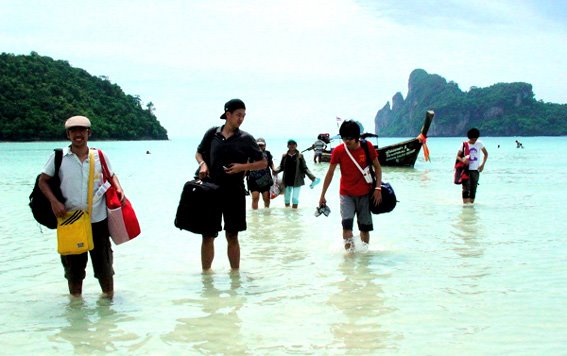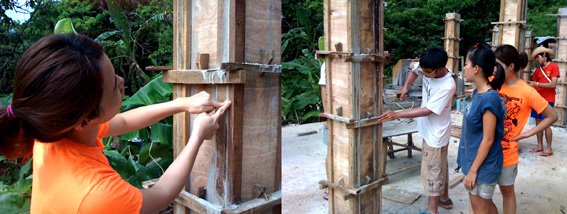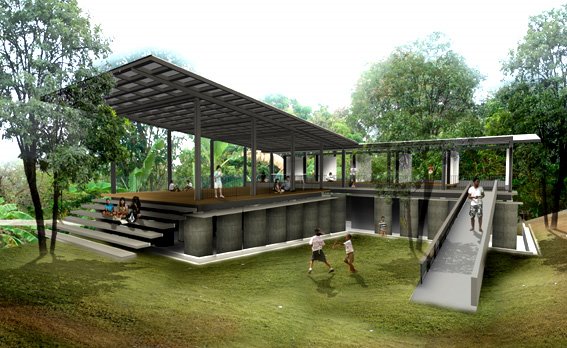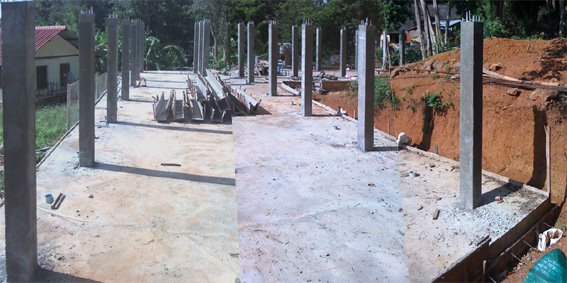The Baan Laem Tong School serves the local communities on the island of Phi Phi Don. The majority of children attending this small primary school are from the “Sea Gypsy Village” on Laem Tong beach. They are currently overwhelmed by the rapid development of the tourist industry around Leam Tong (Tong Cape). The community, consisting of approximately 50 families, primarily sustains themselves by providing long tail boat services for tourists. Due to their limited primary education, it is extremely challenging for them to work at the nearby five-star hotels. The Baan Leam Tong School only offers education up to the primary school level. For higher education opportunities, students have to travel to the mainland. The Baan Leam Tong International Community Resource Center project aims to provide a place for those who are unable to pursue higher education to receive vocational training from volunteers within the international community. These volunteers would also have accommodation at the facility. A group of INDA students, along with Assistant Professor Rachaporn Choochuey and students from Chulalongkorn University’s Thai architecture program, visited the site to lend a hand with the construction.
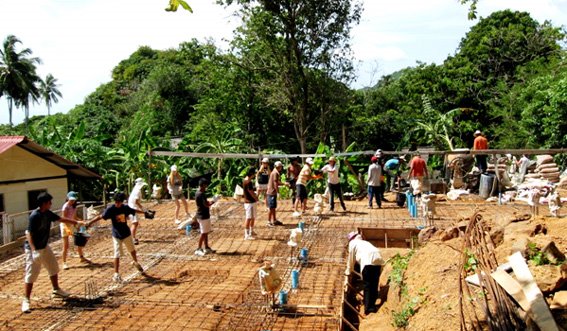
Rachaporn Choochuey
Related Projects:
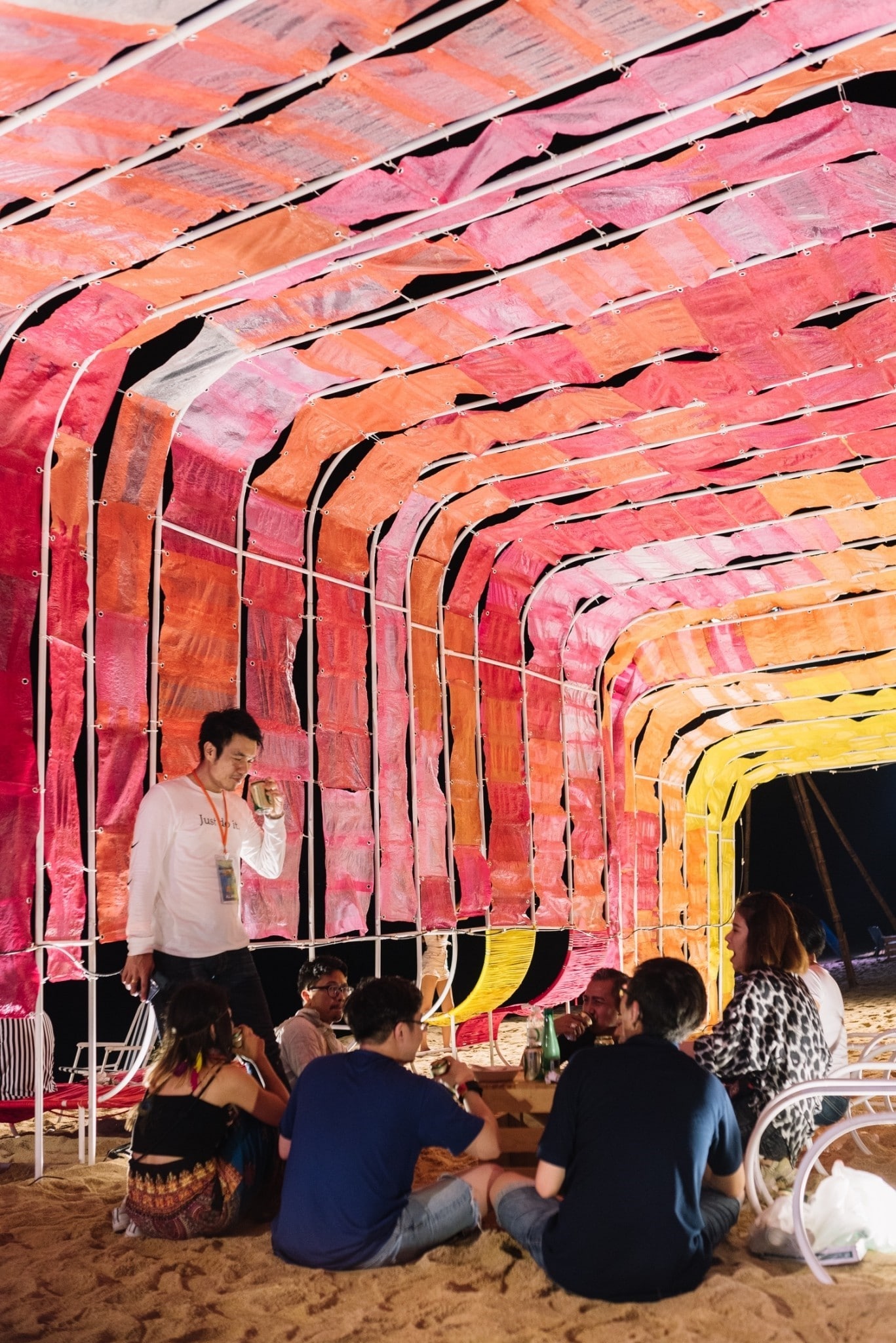
Spectrum
Bangkok Design Week 2018, an annual event organized by the Thailand Creative and Design Center (TCDC) invited the Thai creative community to share fresh and insightful visions of Bangkok with experimental design projects. “Spectrum” is a design-build workshop that proposes an alternative application for plastic bags and examines the architectural properties of the material including color, light transmission, elasticity, and durability. Exploring the concept of “upcycled” materials, students have collected over 500 colored plastic bags, flattened them, and fused them together to generate a cladding surface that includes specially-fabricated segments with a double curvature. The continuously-morphing pavilion structure consists of twenty-six powder-coated steel tube frames that provide different seating configurations, while its modular components and simple construction joints allow for easy assembly and disassembly to facilitate flexible reuse for future events. In fact, it was originally built at the Bangkok Art and Culture Centre (BACC) but was later reconstructed as part of MUI Fest 2018 on the island of Koh Samui.
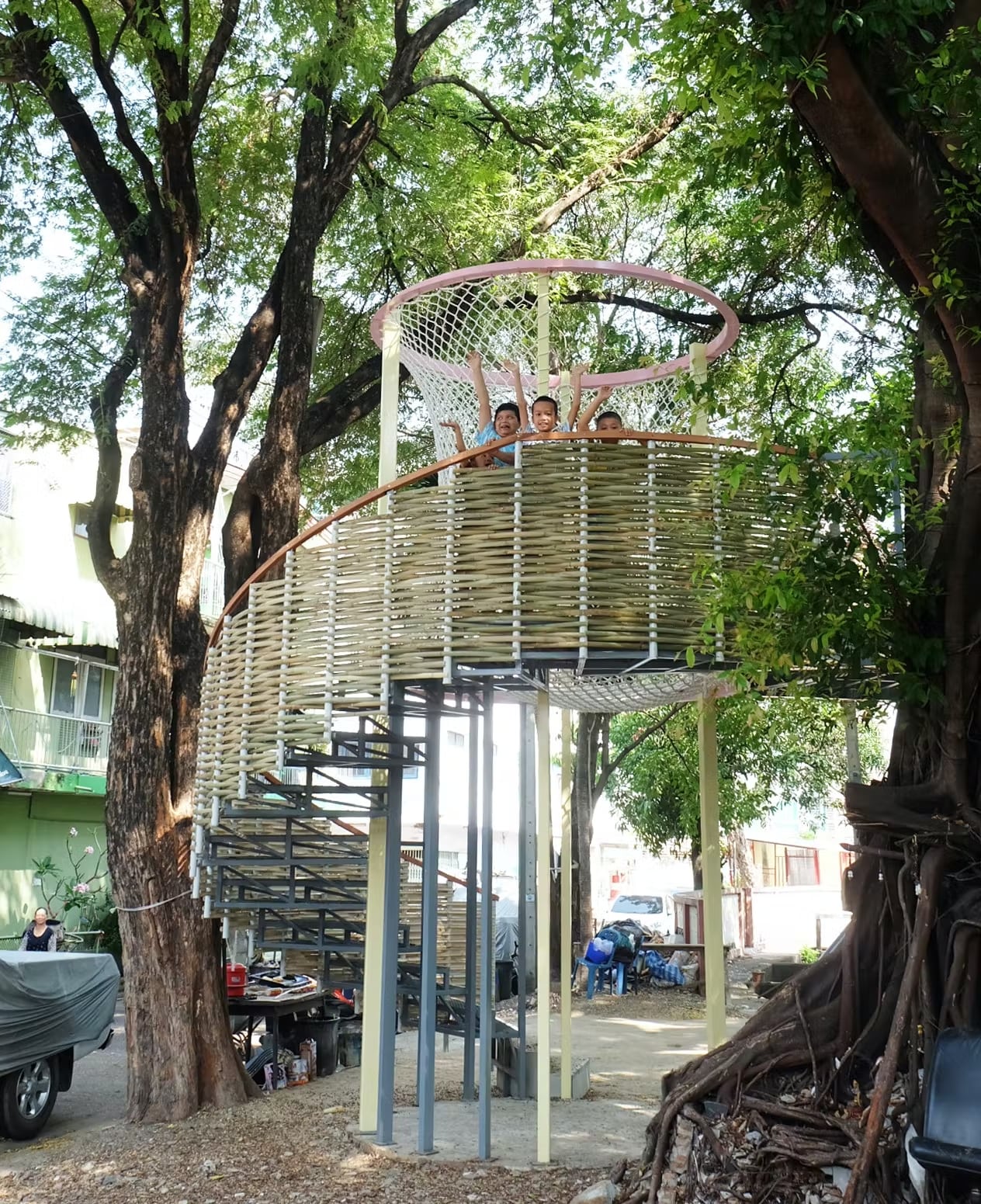
Treescape
Bangkok’s grand trees are an essential part of the urban landscape. They provide shelter and shade; they act as gathering points for food sellers and tuk tuk drivers; they give the streets their distinctive character; they absorb airborne pollutants, and they sequester carbon. Trees provide habitats for birds, squirrels, and insects, and they have bridged human generations, embedding experiences and rooting communities. ‘Treescape’ embraces our inescapable connection with Bangkok’s trees through the construction of an elevated structure that brings together the local community in Phra Khanong. Students met with arboriculturalist Rainer Reichel to better understand the features and characteristics of the local trees, created a highly precise 3D photogrammetric scan of the trees, and presented their design proposal to the Phra Khanong District Authority for approval. A reinterpretation of a childhood tree house--an enchanting stage elevated above the site--the structure provides safe access to higher branches in the tree’s canopy and creates a unique space for play and for environmental connection.
